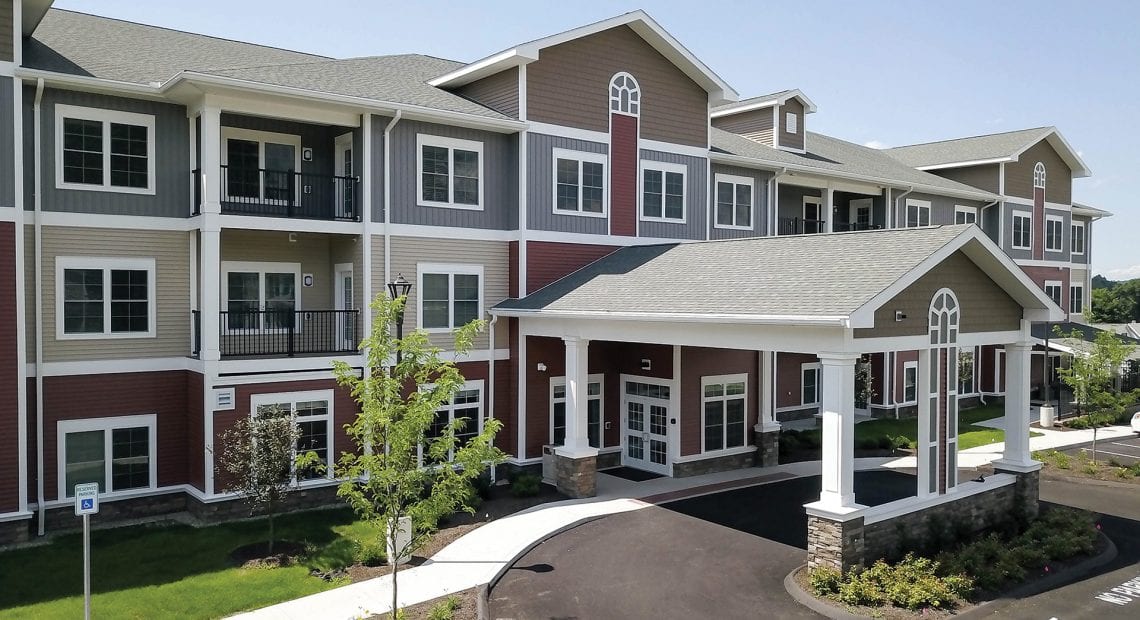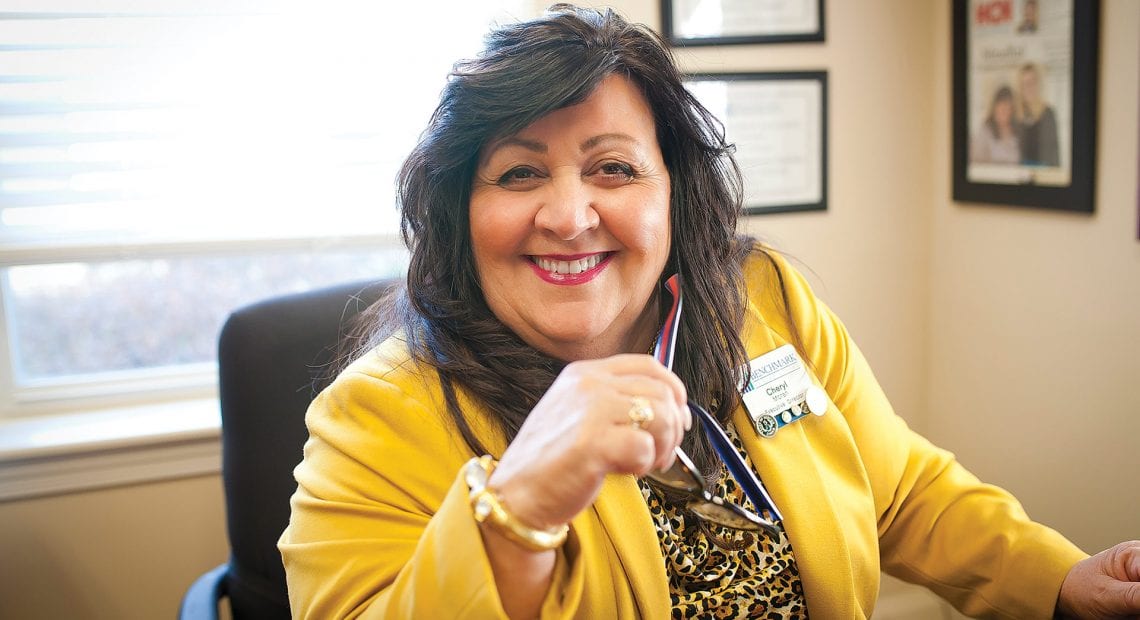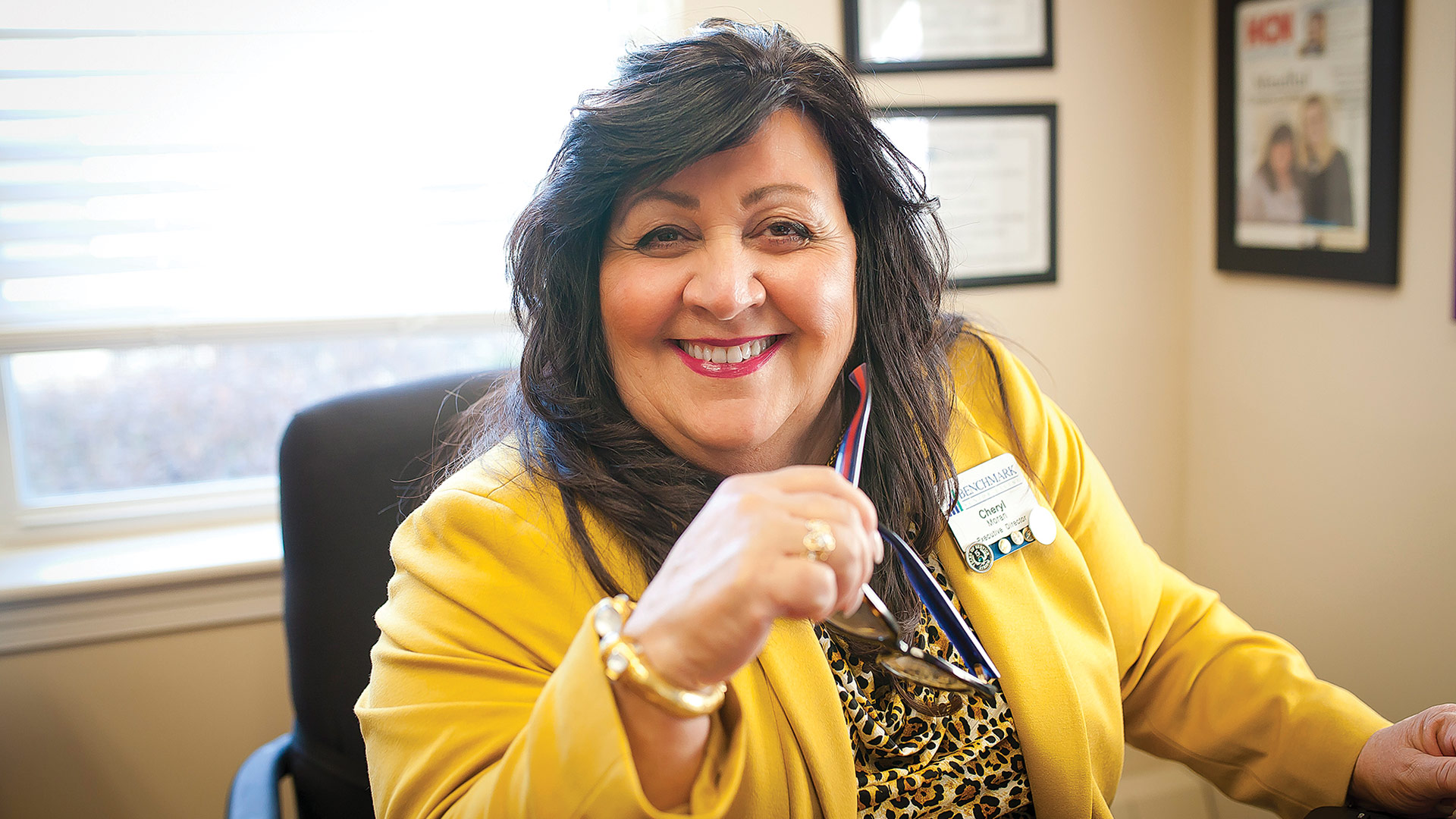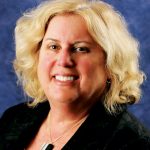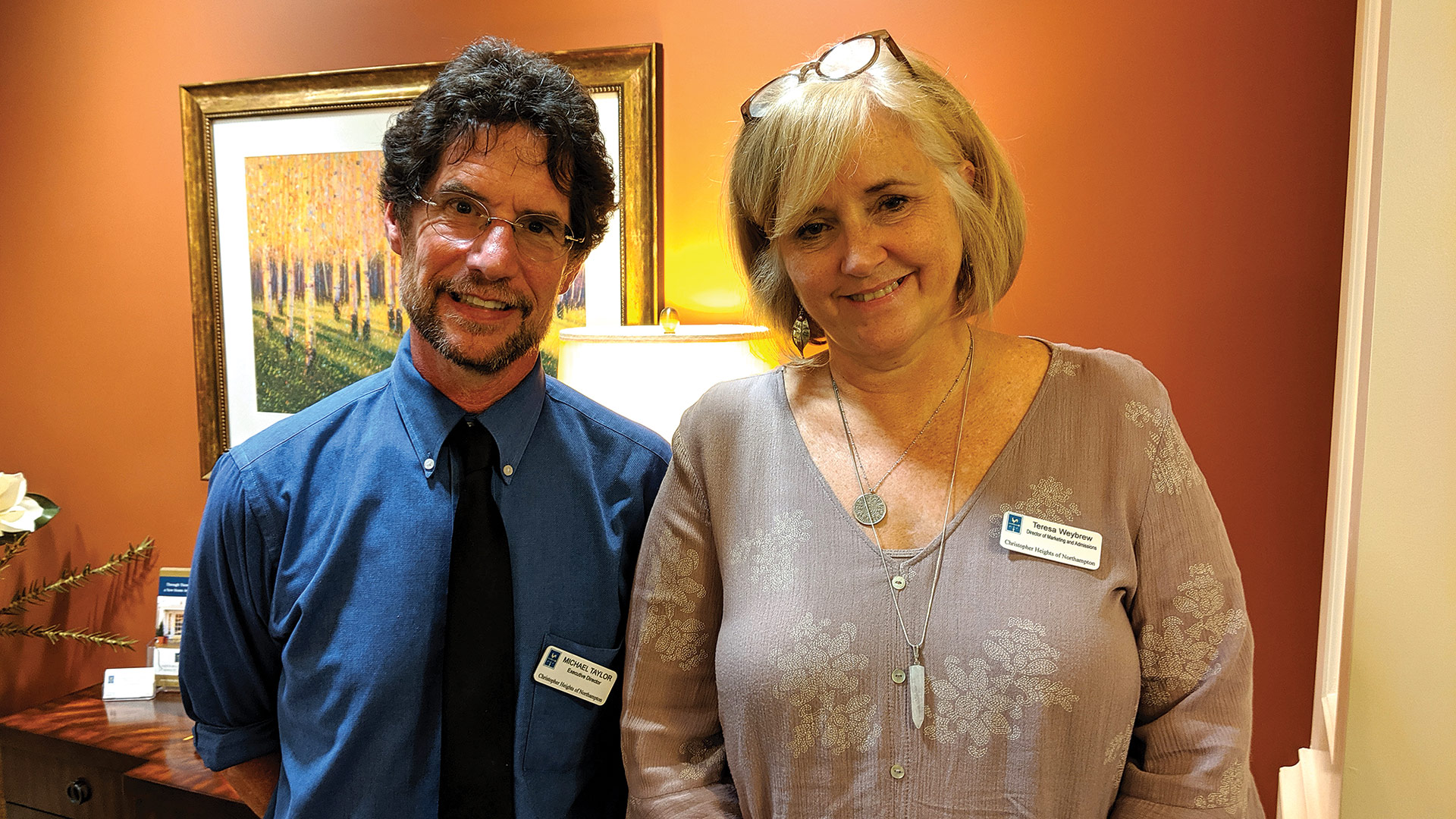No Time Like the Present
By Mark Morris

The senior-living industry is preparing for a “gray tsunami.”
According to the U.S. Census Bureau, nearly 10,000 Baby Boomers will turn 65 every day for the next 10 years, while the oldest Boomers will start turning 80 in 2025.
Robert Kelley, in-house counsel for Everbrook Senior Living, predicts that, once Boomers start reaching that age, the demand for senior-living communities will increase significantly. That’s one of the many reasons he’s excited about his company’s newest community, Cedarbrook Village in Ware.
From its corporate office in Southampton, Everbrook already manages three senior-living communities in Windsor Locks, Hebron, and Bozrah, Conn., and Cedarbrook is its first community in Massachusetts.
Originally planned for a July opening, various delays postponed the ribbon-cutting ceremony until Sept. 14. Kelly Russell, executive director of Cedarbrook Village, has worked in the industry for more than 20 years and has overseen plenty of community openings, but this one was different.
“For this grand opening, we made sure to have plenty of PPE on site for anyone who needed it,” Russell said. Moving people into their apartments safely during COVID-19 also required a new approach.
“We set up different times and arranged for people to use different doors, so they would not run into each other,” she said, adding that social distancing and cleaning between move-ins was all part of the extra planning and organization necessitated by the pandemic.
When families help their parents move into senior living, it’s often a stressful time, she said, and the added stress of COVID-19 has only intensified the anxiety and guilt family caregivers feel. With all the restrictions imposed by COVID-19, families now worry they won’t be able to see their loved ones.
“We reassure family members that we are taking all the necessary precautions so they can schedule visits in a safe environment and stay in touch with their loved ones,” Russell said.
For example, scheduled visits are a departure from pre-COVID times when families could drop in anytime.

Kelly Russell says senior living is an attractive option during a pandemic because the safety measures in place give families peace of mind.
“We would tell families this is their home, too. If they wanted to come spend the night with their loved ones and eat in the dining room with them, they were welcome to do all that,” Russell said.
Unfortunately, that wide-open policy is on pause — one of many ways life is different right now in the senior-living sector. But the fact that Cedarbrook opened at all during such a year is a reflection of the growing demand for such facilities, and how this multi-site company intends to continue meeting that need.
Safety First
Keeping an aging loved one safe at home during the pandemic can mean a great deal of work for a family. That’s why senior living is a good option, Russell said, noting that Cedarbrook has extensive COVID-19 safety measures in place which can ease the burden for families and give them peace of mind.
“We saw this location as a good fit, and the town of Ware was very accommodating to work with.”
“Even if families don’t see them as much, they know their loved ones are getting all the care they need and still being able to socialize with the residents,” she noted, adding that she also reassures families through social-media postings.
“Whether we’re using FaceTime or sending videos, I post a lot online,” she said. “This way, the families who can’t visit their loved ones often enough can see them smiling and engaged in activities with other people. It lets the family know their loved one is OK.”
Among its 119 units, Cedarbrook offers independent living, assisted living, and a memory-care center. Russell explained there are many reasons why people choose to move in.
“Folks usually move in to our independent-living apartments because they are tired of taking care of a house and a yard, or their laundry is in the basement and stairs have become too difficult, things like that,” she said, adding that independent residents can either make meals for themselves or join others in the dining room.
“Those who move into assisted living usually need some help with everyday tasks such as eating, dressing, and grooming,” she continued. Instead of sitting home alone watching TV, they can be part of a community and engage in activities and exercise programs, and socialize with other people.
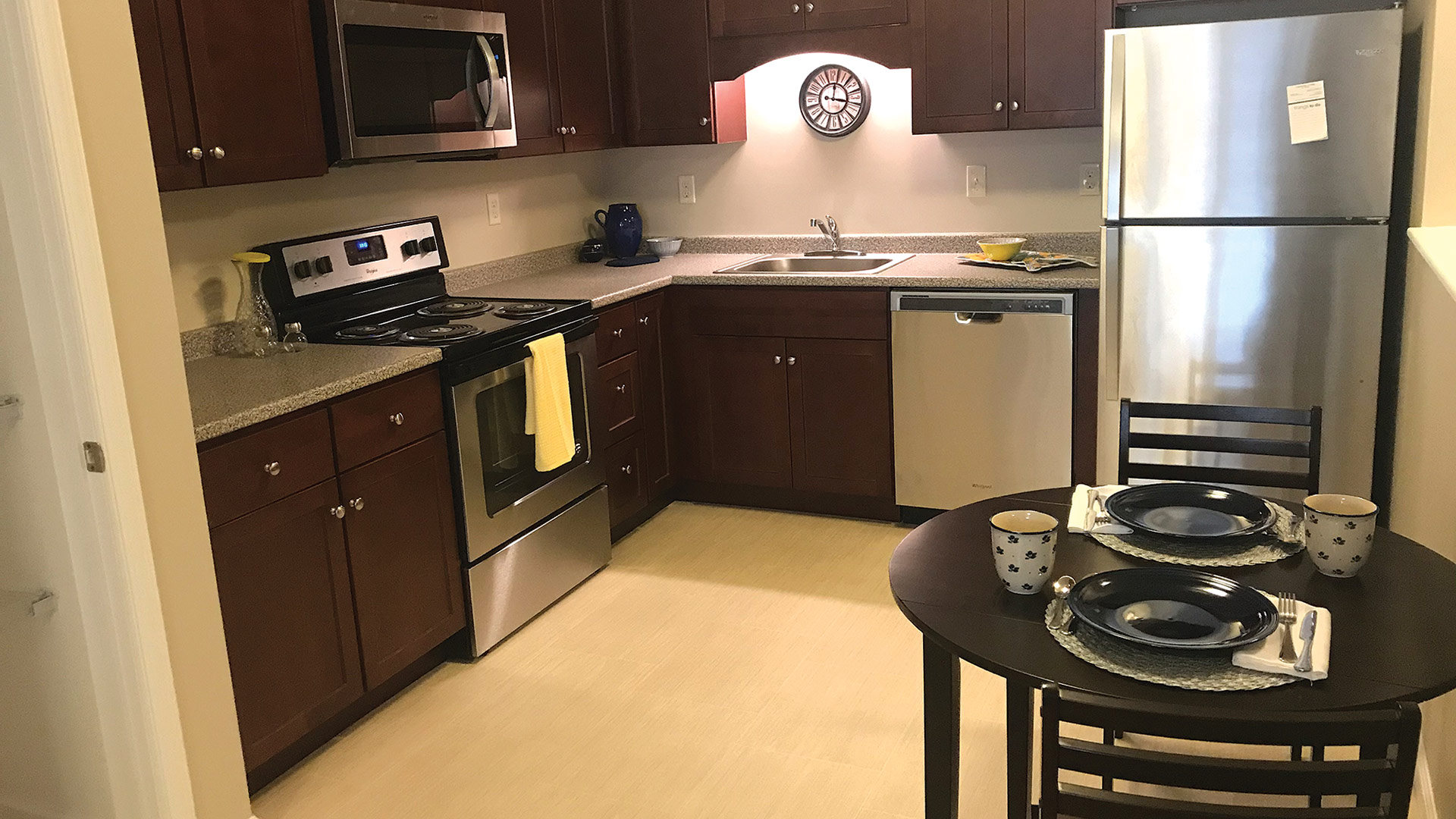
Independent-living residents can either make meals for themselves or join others in the dining room.
Everbrook chose Ware as the site for Cedarbrook because the Quaboag region, encompassing Ware, Brimfield, and surrounding towns, had no senior-living facilities; the closest options were located in the Wilbraham/Ludlow area to the west and Greater Worcester to the east.
“We saw this location as a good fit, and the town of Ware was very accommodating to work with,” Kelley said, adding that the building design incorporated local influences.
“Several design details of the building are reminiscent of the South Street School that once occupied this site,” he noted, while another example is the large-screen movie room at Cedarbrook, called the Casino Theatre, inspired by the iconic movie house once located on Main Street in Ware.
Trends in senior living have changed over the years. Twenty years ago, such communities tended to attract people in their mid- to late 70s. As longevity has increased, the average move-in age these days has risen closer to the 80s and even 90s.
In the past, inquiries from families focused on services and amenities offered, as well as activities and the level of care. Since COVID-19, Russell said, the questions have changed. “Now, we’re asked, ‘do you have a generator?’ ‘how do you respond to emergencies?’ and ‘what supplies do you have on hand?’”
As a new building that has only recently opened, Russell is able to market the community as having plenty of space for socially distanced meals in two large dining rooms. “Everyone can eat together because we can space them far enough apart.”
Cedarbrook also works with a primary-care physician whom residents can access through telehealth for routine inquiries, rather than going out to a doctor’s office. Meanwhile, an exercise physiologist runs the fitness programs for residents. At one time, exercise programs and other activities filled the calendar, but the number of activities has been reduced to allow for disinfecting equipment and rooms in between sessions. Russell described it as emphasizing quality and safety over quantity.
“If you’re smart about it,” she said, “you can still offer activities and keep everyone safe.”
Shifting Tides
By following that same approach, Russell continues to assure families that senior-living communities such as Cedarbrook are the right choice for their loved ones during this crisis.
“We want families to feel secure in knowing that there will always be support here for their loved ones,” Russell said, adding that, while no one can guarantee COVID-19 won’t find a way to infect people, Cedarbrook has measures and equipment in place in the event of an outbreak.
“If our residents have to quarantine, they will still get the care they need and still have their meals,” she said. “We will also help residents stay in touch with their families.”
Keeping safety as the main priority, Russell believes the key is to make adjustments as things change. “I don’t really feel like there is a ‘new normal’ because every day brings new and different challenges we have to face.”
And, like everyone, she looks forward to a time when COVID-19 restrictions are a thing of the past. “We can’t wait until we can fully open the community and share with families everything we have to offer here.”
Prior to Cedarbrook’s opening, Russell had another big event on her calendar this year — she was married on Aug. 28, a date she intentionally chose before the September opening.
“The wedding was much easier to plan than opening the building,” she said with a laugh — but is happy to have accomplished both during a year no one will forget.



